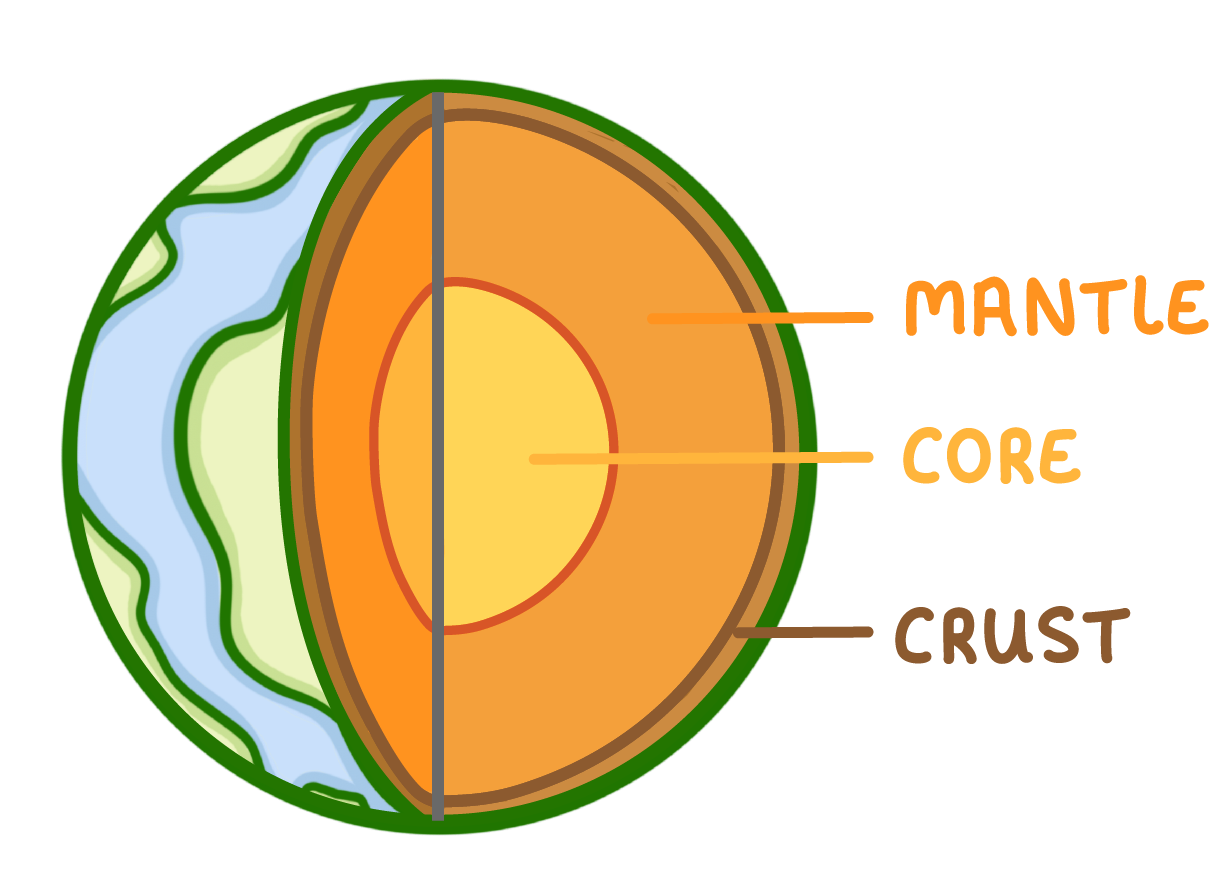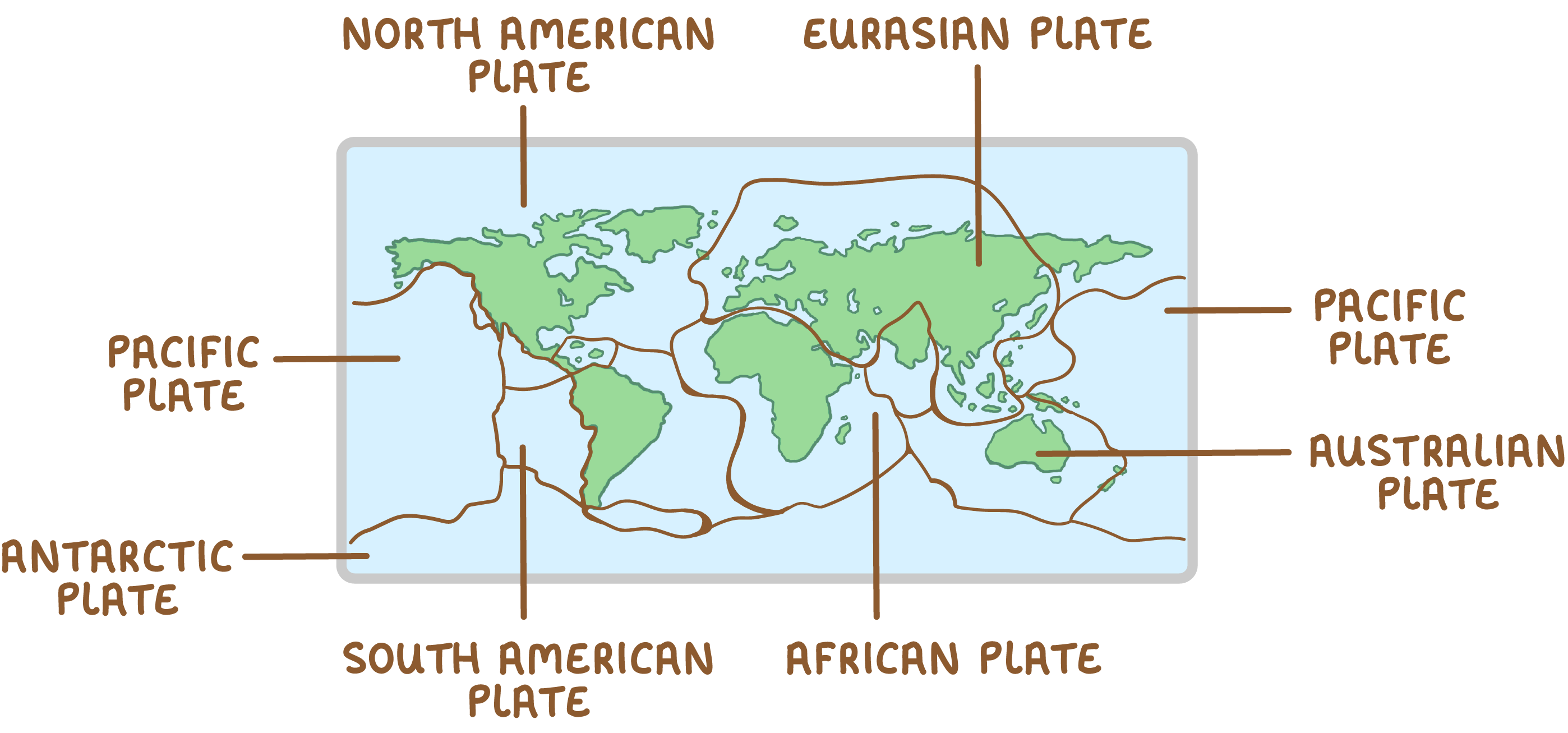The Earth's structure
This lesson covers:
- The Earth’s layers
- The properties of the crust, mantle and core
- How the crust consists of moving tectonic plates
The Earth's internal structure

The Earth can be divided into distinct layers. It has:
- A thin, solid outer layer called the crust.
- An inner layer known as the mantle.
- A dense central region called the core.
The crust

- The crust is the outermost layer of the Earth.
- It is made up of solid rock and is relatively thin compared to the other layers.
- Life exists on top of the crust, as it provides a surface for plants, animals and humans to live on.
The mantle

- The mantle lies between the crust and core, and makes up the largest section of the Earth.
- It is made up of very hot, slowly flowing rock that acts a bit like a liquid.
- The rock is able to flow as the temperature and pressure increases deeper into the mantle.
The core

- At the centre of the Earth lies the core, the Earth's innermost layer.
- Scientists believe the core is composed chiefly of iron and nickel.
- It is much hotter than the overlying mantle due to immense pressure.
Tectonic plates

The crust and upper mantle are divided into rigid pieces called tectonic plates:
- Tectonic plates are huge slab-like segments of the crust and upper mantle.
- They fit together like pieces of a jigsaw puzzle, with oceans and continents atop them.
- Plates slowly move across the mantle in different directions, at speeds of a few centimetres a year.
- Their motion can cause earthquakes and volcanic activity at plate boundaries.